A four-door liftback sport sedan is the ultimate type of vehicle; it doesn’t get any better than having something that’s fast, roomy, and sleek. The Porsche Panamera is the best example of this type of car, and the GTS is arguably the sweet spot of the lineup.
(Full disclosure: Porsche lent me a Panamera so I could take my family on a road trip to San Diego.)
What Is It?
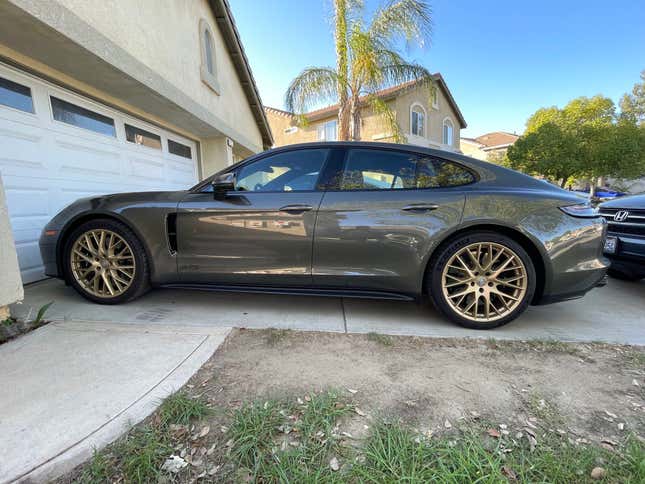
The Panamera lineup is expansive, consisting of a whopping 23 variants split between 15 sedans and seven Sport Turismo wagons. Pricing is equally expansive. Including a $1,350 destination charge, the range starts at $92,400 for the base model and runs all the way up to $200,400 for the Panamera Turbo S E-Hybrid Sport Turismo. The Panamera GTS is just above the midway point in the hierarchy, and importantly, it’s the least expensive way to get a V8 this car. Of course, I’m still talking 1-percenter pricing; the GTS starts at $135,200. And with Porsche’s a-la-carte options structure, the price of my test car rises to $160,330.
Specs That Matter
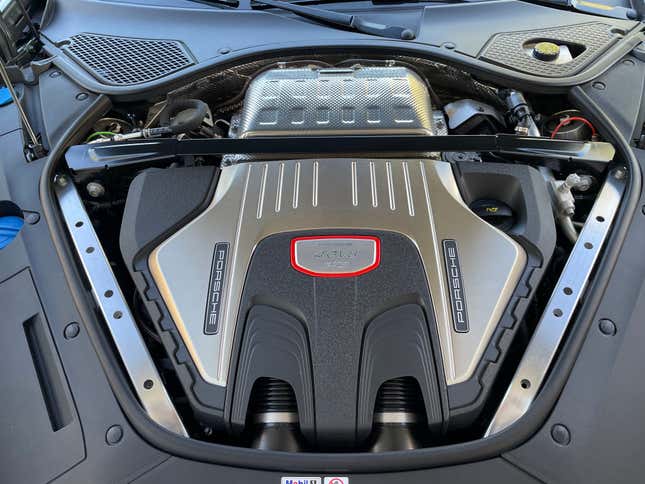
This V8 is a hell of a powerplant. The 4.0-liter twin-turbo engine puts out 473 hp and 457 lb-ft of torque. That gets routed through an eight-speed dual-clutch automatic transmission and all-wheel drive. It all adds up to some serious performance: The Panamera GTS sedan can hit 60 mph in 3.7 seconds and go on to a top speed of 187 mph.
The best part? It’s a performance car you can actually use. That liftback is a beautiful thing for functionality. There’s 17.6 cubic feet of space in the back with the seats up, but fold them down and that grows to a small-crossover-rivaling 47.3 cubic feet.
How It Drives
The Panamera seriously drives like a long 911. You can take corners at speeds you wouldn’t expect, with super-flat overall composure thanks to Porsche’s Active Suspension Management (PASM) tech. Combined with steering that is dead-on precise, the Panamera GTS is a Porsche through and through.

Despite how good the GTS handles, the ride doesn’t suffer. Even with the adaptive dampers in full-on Sport Plus mode and riding on large, 21-inch gold (“Satin Aurum” according to Porsche) wheels with low-profile summer tires, bumps and road imperfections are totally soaked up. A lot of that can be attributed to the PASM adaptive dampers since they mitigate road imperfections when you’re driving over rough pavement.
When it comes to bringing all the fun down to city speeds, that’s not a problem. This Panamera GTS is equipped with 15.3-inch front and 14.3-inch rear carbon ceramic brakes, a $9,860 option.
What’s Great
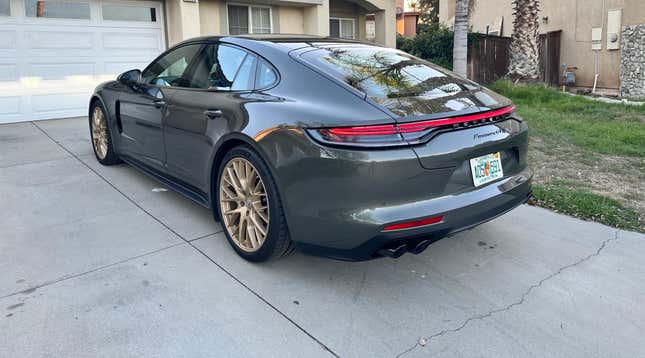
For starters, the Panamera’s design. The 2017 model year redesign really cleaned up the sedan’s looks, especially in the rear. The thin taillights are connected by a cohesive light bar, and the integrated and electronically deployable rear spoiler works way better with this more streamlined design.

The interior is nice and spacious, and there’s lots of rear seat legroom. Headroom is also pretty good, even with that low roofline. The overall dash design is clean and modern, another big improvement over the first generation. And the Panamera’s seats are fantastic, especially on a long drive. My test car’s specific seats have Race-Tex (read: fancy suede) trim, which is a $3,480 option.
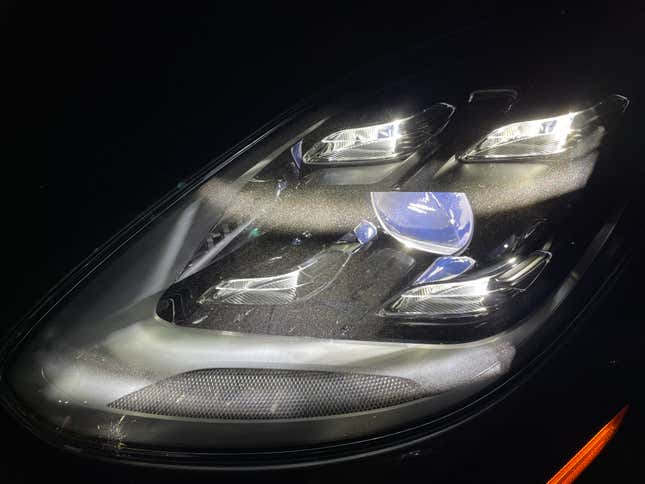
Porsche’s LED matrix headlights are some of the best and brightest I’ve ever used. They’re a $1,210 option – add another $600 if you want the headlight surrounds in black – and that price is more than justified. In addition to automatic high-beam assist, there are cornering lights that swivel the low beams based on steering input, and the turning angle increases when the car is in Sport mode. The lights also have speed-dependent dynamic range control, which increases the length of the light distribution at speeds above 68 mph.
What’s Weak
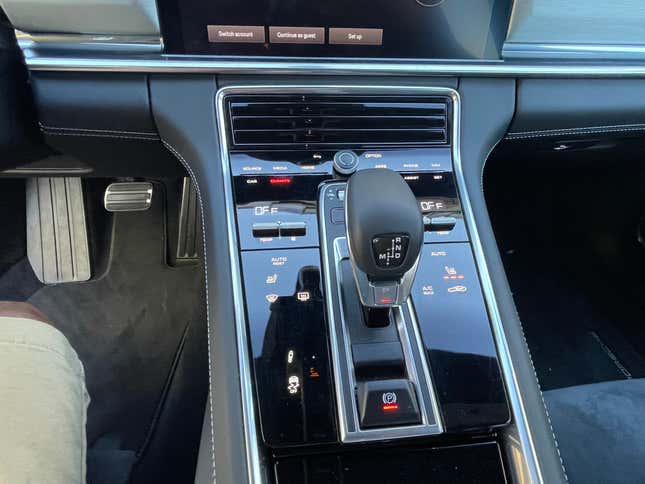
The first-generation Panamera had way too many buttons on the center console – over 80 in total. The second-gen redesign fixed this with a flat, backlit panel, but Porsche added something that’s arguably worse: haptic controls. Every single button, save for the switches used to adjust the fan speed and temperature, is a haptic control. While it looks cleaner and less cluttered, these buttons can be a pain to use. They’re designed so that they can’t be easily (or mistakenly) pressed, which is understandable; you don’t want to accidentally brush your hand against a control you didn’t mean to engage. But when it comes time to actually turn something on or off, you end up having to press harder than normal, which can be annoying if you’re not trying to take your eyes off the road. There’s always that second glance back to make sure you’ve hit the button correctly. What’s worse is that these controls are all set on a piano black surface, so the whole center console is a magnet for fingerprints and smudges.
Then there are the Panamera’s air vents. While the outlets next to the window and in the B pillars are normal, the ones in the center of the dash are electrically operated. These vents have four flaps that open when the climate control is activated, but weirdly, you can only adjust them through an interface in the 12.3-inch Porsche Communication Management infotainment touchscreen. This is super annoying.
Verdict
The Panamera GTS’ combination of V8 power, liftback versatility, and excellent chassis tuning are unmatched. Unfortunately, the car’s high price puts it out of reach for most people, and moreover, a lot of people looking for a quick and luxurious Porsche sedan are choosing to go electric; the Taycan now outsells the Panamera by a huge margin. Still, the Panamera GTS embodies some of the best qualities of Porsche’s engineering, and it’s an incredibly versatile all-rounder that in no way sacrifices performance.